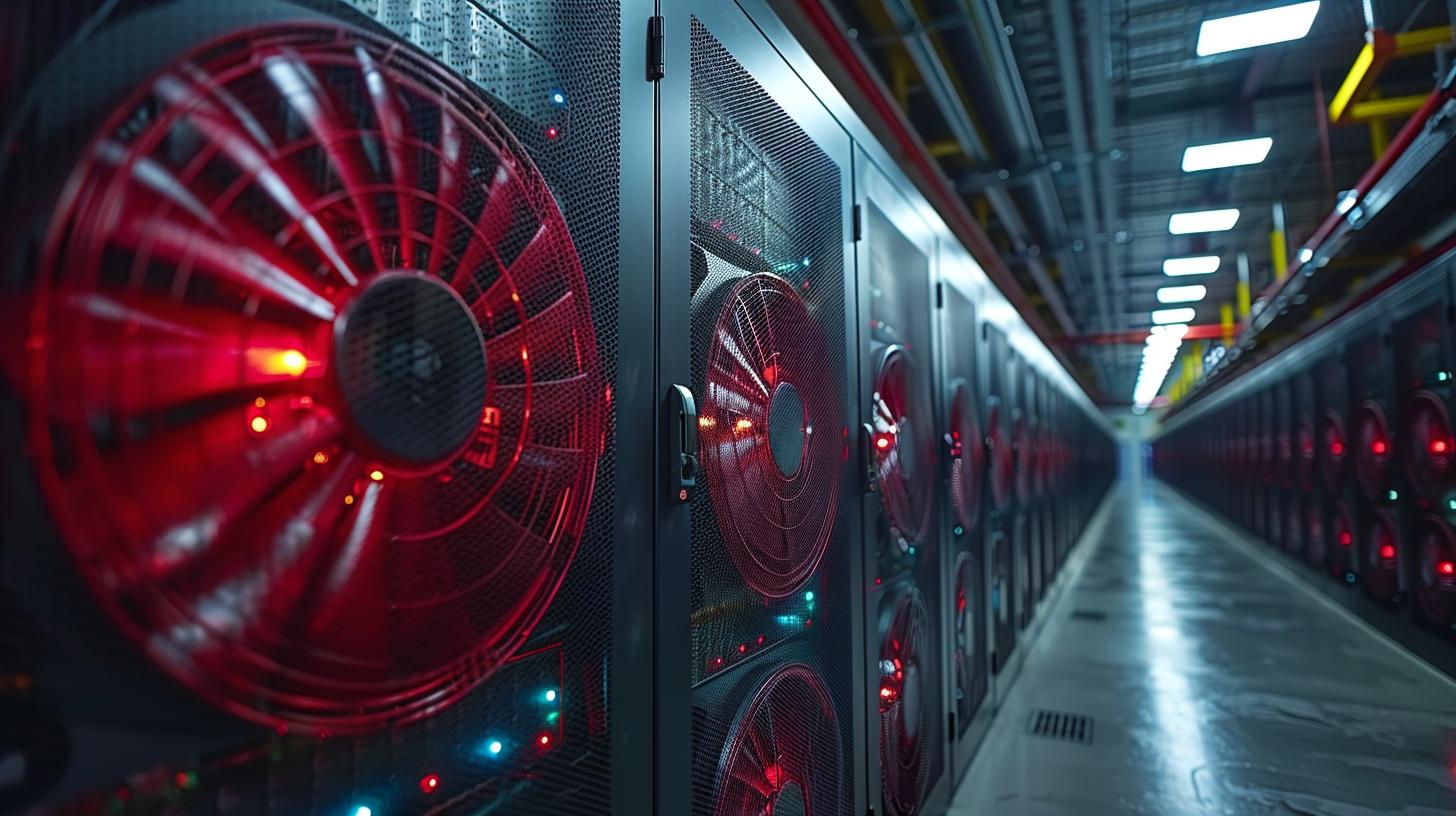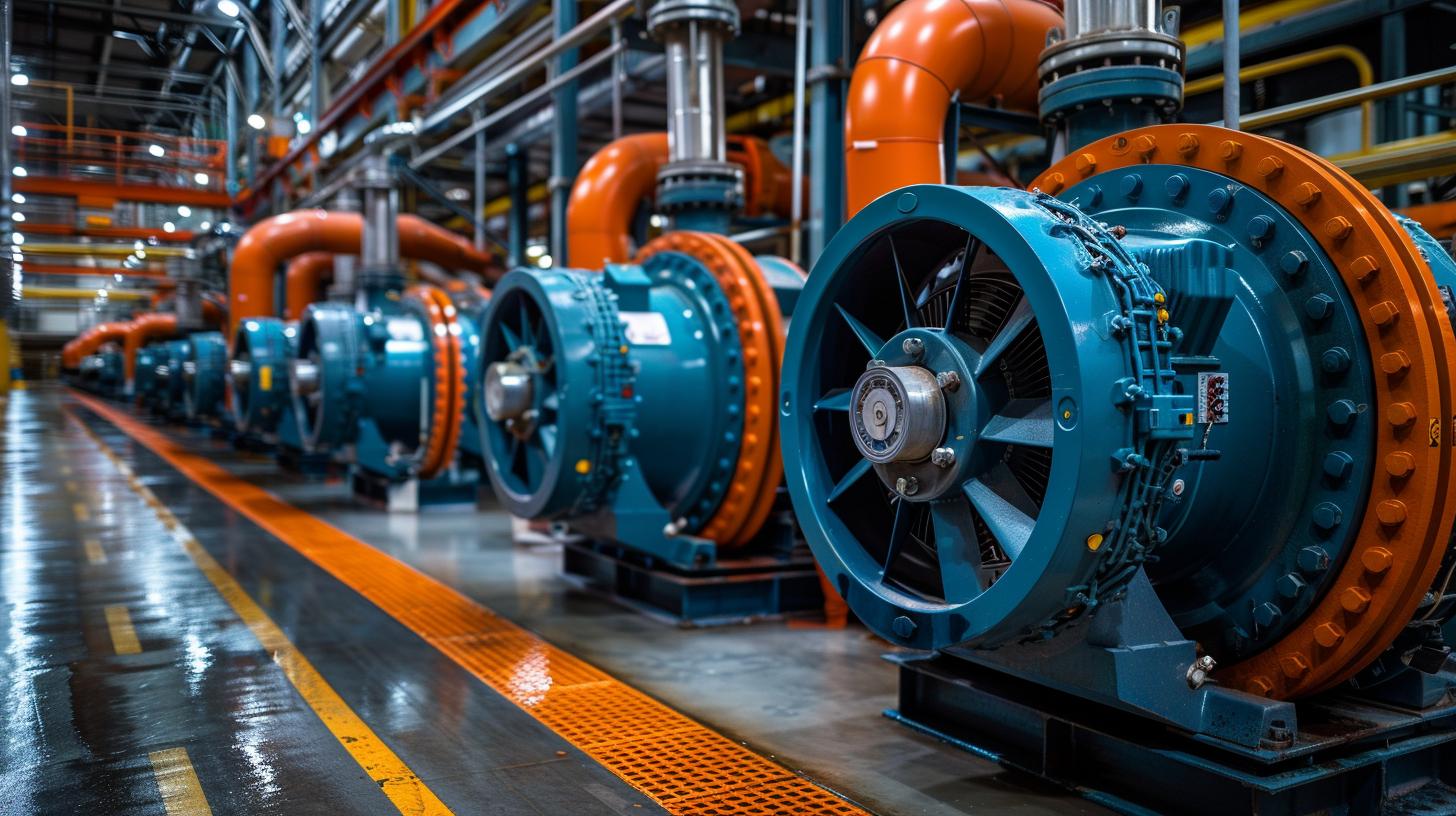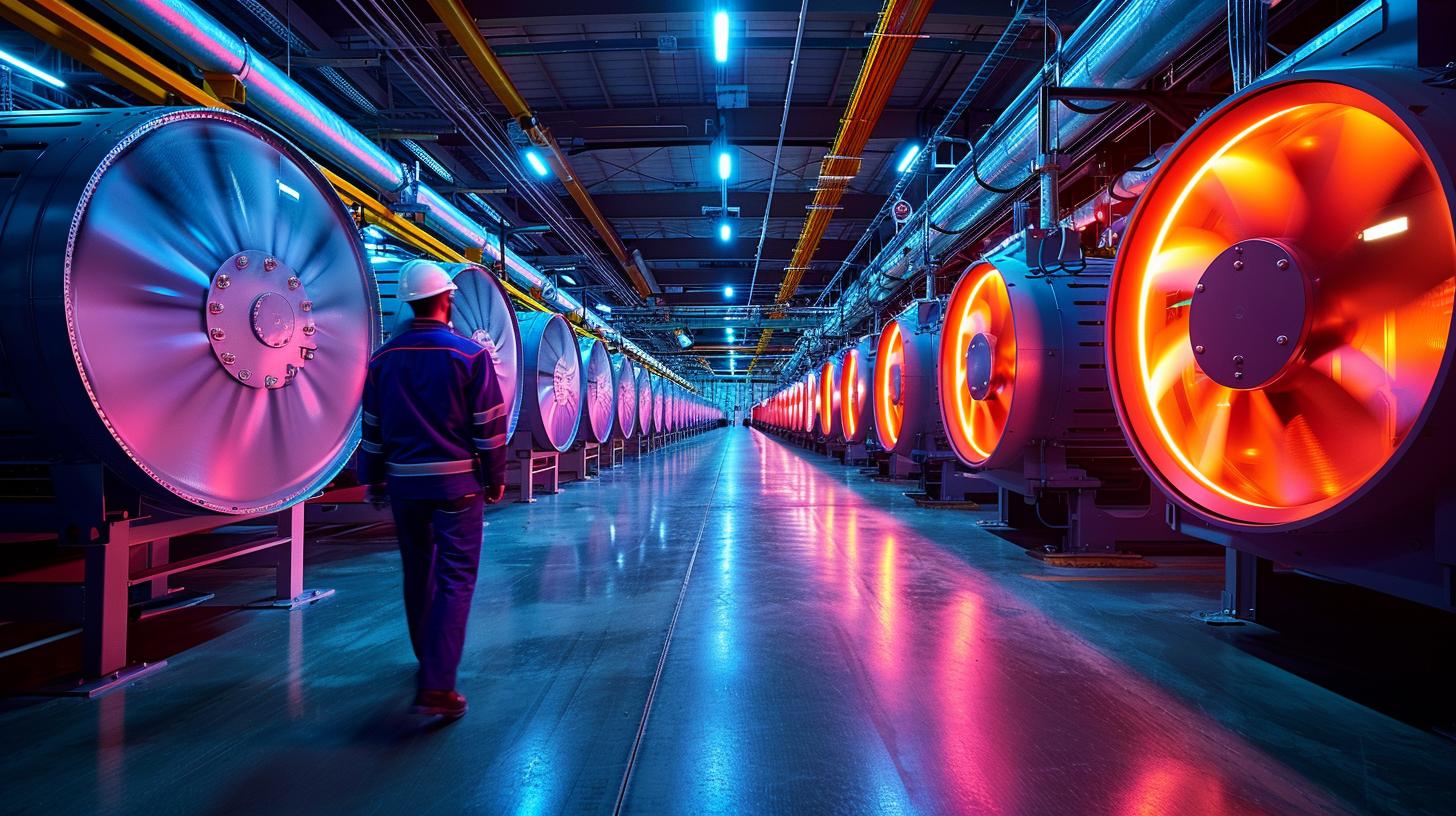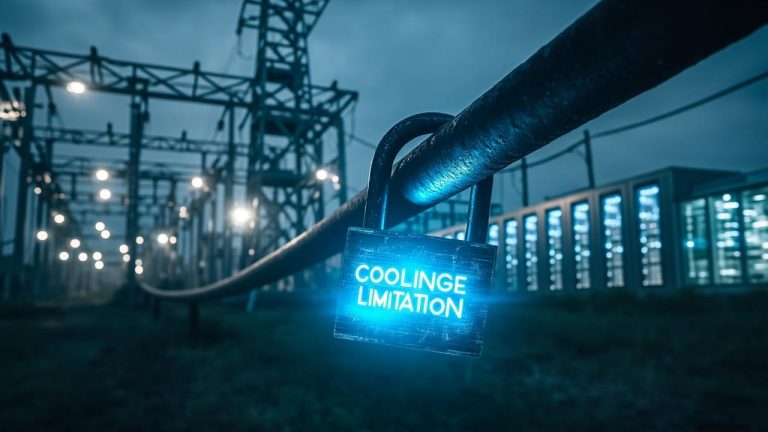Cryptocurrency mining has come to the fore as a viable and profitable venture. It is, however, constrained by high energy consumption and heat generation, which necessitate effective cooling to maintain optimal operations. As such, ensuring cooling efficiency for cryptocurrency mining becomes crucial in this context. In the following article, we delve into the complexities of crypto mining and why its process leads to steep energy usage.
To understand cryptocurrency mining would mean understanding how it works at a core level-it uses computational power to solve complex mathematical problems that validate transactions within a blockchain network. However, as much as it’s digital currency, it comes with physical implications: it uses up tremendous amounts of electricity leading to significant heat output. This increase in temperature can then damage the hardware involved if not adequately tamed.
This is where cooling steps in-efficient cooling dramatically helps keep temperatures low enough to prevent crypto “miners” from overheating. The importance of maintaining low operational temperatures cannot be emphasized enough; apart from preventing hardware damages or malfunctions, it also optimizes performance and lengthens machinery lifespan. To say that effective cooling is critical for maintaining mining efficiency would therefore be an understatement; it drives the essence of sustainable and productive cryptocurrency operations altogether.
Historical Challenges in Cooling Efficiency for Cryptocurrency Mining
Cryptocurrency mining, a process that relies on powerful computer hardware to solve complex mathematical problems, yields substantial heat emissions. Traditional methods to cool crypto mining systems have principally included inexpensive air cooling and more effective, but costly, liquid cooling solutions. Air-cooling systems rely on dissipating the heat into the surrounding environment, whilst high-performance liquid cooling uses conductive fluid to directly extract the excess heat from computer components.
- Air Cooling: Although cost-effective, these systems fall short due to their limited efficiency in high-demand settings, often leading to over-heating issues.
- Liquid Cooling: The prohibitive costs of installation and maintenance of custom loop configurations for liquid-cooling make this solution inaccessible for most miners. Additionally, leakage-related damages present a considerable risk when employed at scale.
These traditional approaches face severe limitations and shortcomings which not only impede mining productivity but also increase operational costs. Specifically:
- Energy Expenditure: Cooling a cryptocurrency mining operation is energy-intensive and demands up to 40% of the overall energy utilization. This significant energy factor directly influences the economic feasibility of maintaining productive crypto operations.
- Durability: Frequent overheating can lead to hardware degradation and shorten lifespan, leading to frequent exchange or upgrade requirements which prove financially demanding.
- Spatial Limitations: A considerable space requirement for separate HVAC (Heating, Ventilation Air Conditioning) units may limit scalability options within a given environment.
Given these drawbacks experienced by traditional cooling practices, it has become clear that there is an urgent need for superior alternatives that offer an enhanced level of cooling efficiency for cryptocurrency mining. The relevance of efficient cooling in digital currency technology continues to grow alongside the operating temperatures of powerful modern machinery – solidifying its integral position within the lucrative world of crypto.
The Need for Revolution in Cryptocurrency Mining Cooling Systems
Why Efficient Cooling Is Essential to Modern Cryptocurrency Operations
Cryptocurrency mining has become a sophisticated process that necessitates top-range processing prowess and significant amounts of power. The crux of successful mining operations lies in efficiency which is deeply entwined with cooling mechanisms. As miners seek to maximize profits, they can no longer overlook or underestimate the role played by efficient cooling solutions.

This growing urgency stems from the fact that overly heated systems underperform, leading to dwindling returns. Moreover, traditional cooling solutions – such as air conditioning systems – are proving insufficient and increasingly expensive for large-scale mining farms.
Furthermore, the heat generated by intense cryptographic operations affects not only mining productivity but also system longevity. Mining hardware subjected to high temperatures tends to experience reduced lifespan translating into additional costs due to frequent replacements and downtime during maintenance.
Cooling Efficiency and Sustainability in Crypto Mining
Beyond operational efficiency, cooling efficiency for cryptocurrency mining carries weighty implications for sustainability – an issue coming under increased scrutiny across industries globally. Given its energy-taxing nature, crypto mining already invites criticism on environmental sustainability grounds. Insufficient emphasis on cooling magnifies these concerns since traditional methods like Air Conditioning (AC) and Water Cooling Units (WCU) consume a lot of electricity.
Notably, innovative techniques that boost cooling efficiency could help mitigate these problems. Adopting such technologies would mean optimizing power usage so that less electricity goes towards dissipating heat produced during mining activities – a direct contribution towards environmental conservation by reducing the carbon footprint of the industry.
Towards Environmentally-Conscious Crypto Mining
Determining future operational strategies against the backdrop of mounting environmental concerns necessitates fresh innovations in the arena of crypto-mining cooling solutions themselves. The current state of affairs paints a picture where some established companies continue relying on outdated systems while newcomers often lack the resources and expertise to establish sound temperature management systems. In both cases, unoptimized power consumption compromises mining efforts and inadvertently impacts the industry’s environmental footprint.
Aside from the push towards green-governance by activists, authorities, and even investors have begun emphasizing sustainable practices – a trend crypto miners cannot afford to ignore. As such, it becomes apparent that there’s an urgent need for a shift from traditional cooling methods to revolutionary ones that deliver on both performance enhancement and sustainability promises.
This transformation will play an integral role in shaping not only the productivity of pioneering mining farms but also the perception of this burgeoning industry in increasingly eco-conscious societies.
Introduction to Data AirFlow Innovations
The emerging technology, Data AirFlow cooling, is revolutionizing various industries by addressing their thermal management challenges. This innovative concept involves leveraging the fluid dynamics of air to optimize the distribution and flow for effective cooling. The model is designed to deliver indirect, distributed airflow to specific components in a system, thereby successfully minimizing heat-related issues.
Data AirFlow cooling exhibits stark differences when compared with traditional methods employed for combating heat. Popular methods such as liquid cooling and fans have been conventionally used in reducing temperature surges during computing processes. However, these solutions face issues such as high operation and maintenance costs and limited spatial application due to their physical constraints. In contrast, Data AirFlow innovation thrives on its cost-effectiveness while also providing a more flexible and scalable model to suit varying needs.

In recent times, the successful applications of Data AirFlow technology can be observed in data centers wherein they required robust schemes for heat reduction without inflating operational expenditure significantly. One notable instance includes how Google adopted this technology to overhaul its traditional water-cooling infrastructure within its data centers; after implementation of this system, Google reported improvements in energy efficiency by up to 30%.
These cases reveal not only the efficacy of the tech but also its adaptability across different settings.
| Cooling Method | Main Limitations |
|---|---|
| Liquid Cooling | Expensive Operation & Maintenance |
| Fans | Limited Spacial Application |
| Data AirFlow | Minimal Reported Limitations |
The Promise of Data AirFlow in Revolutionizing Cooling Efficiency for Cryptocurrency Mining
Cryptocurrency mining has always faced the challenge of managing high heat generation, an issue set to be addressed by Data AirFlow innovations. This technology introduces a new frontier in cooling efficiency for cryptocurrency mining, hinging on optimizing airflow to cool systems. Built around structured management and regulation of air movement, it provides a more dynamic and efficient approach than traditional models.
A key benefit of Data AirFlow technology lies in its ability to intelligently manage airflow. Previous cooling methods often involved broad-scale temperature control, necessitating significant energy expenditure for unevenly distributed results. Conversely, Data AirFlow systems deliver targeted cooling according to each area’s specific needs within the mining setup.
Miner hardware that gets hotter receives proportionately more cooling from the circulated air; on the other hand, less heat-generating components receive only what is necessary. Such an adaptable system reduces overall energy usage significantly – maximizing the profitability of mining operations while mitigating environmental impact.
Furthermore, integrating Data AirFlow technology into cryptocurrency mining could lead to considerable improvements in hardware longevity. The precision-cooling mechanism helps in maintaining an optimal operating temperature across all equipment parts consistently – prolonging their operational life spans and minimizing potential damage caused by overheating issues. This enhancement would result in fewer replacements and reduced downtime between operational cycles – elevating productivity levels in fundamental ways.
Ultimately, the adoption of Data AirFlow innovations promises a seismic shift towards improved sustainability and operational efficiency in cryptocurrency mining. Given the inherent benefits these offer, their role as a game-changer in shaping the industry’s future is undeniable.
Conclusions and Future Predictions
In conclusion, the current state of cooling efficiency for cryptocurrency mining presents both challenges and opportunities. Traditional cooling systems, despite their widespread use and relative effectiveness to some extent, have demonstrated shortcomings in terms of operational costs, maintenance difficulties, and environmental concerns. These limitations hamper the overall productivity and sustainability of crypto mining operations.
The advent of Data AirFlow technology signals a promising shift in approach towards finding an optimal solution for these issues. By leveraging this innovative tech, it is possible to improve the cooling efficiency markedly while reducing resource consumption.
Looking ahead into the future, Data AirFlow innovations could very well revolutionize how cooling efficiency is managed within cryptocurrency mining operations. As more interoperability occurs between these two realms – Data AirFlow tech and cryptocurrency mining – we can expect a significant improvement not only in the processing power but also in sustainable practices within crypto mining processes.
Furthermore, emerging advancements within this technology hold potential for further reductions in energy consumption and costs associated with maintaining optimum temperatures for efficient mining operations.

As we delve deeper into the digital era dominated by cryptocurrencies, industry stakeholders should take note of such technological shifts afoot. Holding on to traditional methods may lead to inferior results while exploring revolutionary solutions like Data AirFlow could offer them competitive advantage.
It’s time that those involved actively embrace this shift and invest in research or implementation of advanced cooling technologies such as Data AirFlow. This would not only be beneficial from an economic perspective but it would also address pertinent environmental concerns linked with high-energy-consuming crypto mining practices – making success in this industry sustainable for all involved parties.
Frequently Asked Questions
What Is the Most Efficient Crypto to Mine?
The most efficient cryptocurrency to mine can vary depending on several factors such as the miner’s hardware, electricity costs and the current market value of the cryptocurrencies. That being said, Ethereum has historically been one of the most efficient cryptocurrencies to mine.
Its Ethash proof-of-work system is designed in a way that it can be effectively mined with consumer-grade graphics processing units (GPUs), which are generally more available and affordable than specialized mining hardware.
How Do You Cool Crypto Miners?
Cooling crypto miners is crucial in order to maintain their performance and longevity. One common method of doing this is by using cooling fans that blow air across the devices to dissipate heat.
Additionally, miners can also be placed in spaces with good ventilation or even air-conditioned rooms if necessary. In recent years, some miners have turned to liquid cooling systems for better efficiency and lower noise levels.
What Is the Efficiency of Mining Crypto?
The efficiency of mining crypto largely depends on how much computational power you can utilize per amount of electricity consumed. It involves considering both specialized hardware’s cost and its power draw alongside energy rates where you live.
Higher efficiency means that less electricity is wasted for every unit of mining output (e.g., per solved block puzzle). As technology continues to improve, new models are often more efficient than their predecessors – but increasing overall network difficulty may offset this advantage.
What Is the Efficiency of a Bitcoin Miner?
Like other types of cryptocurrency miners, the efficiency of a Bitcoin miner will depend on its power consumption in relation to its hashing speed (the number of calculations it can perform each second). Currently, Bitcoin ASIC miners like Bitmain’s Antminer series or MicroBT’s WhatsMiner series offer effective efficiencies amongst mainstream options.
Is GPU Mining Still Profitable 2024?
It’s challenging to predict whether GPU mining will still be profitable in 2024 due to changing factors like coin prices, mining difficulty, and GPU prices itself due to demand from gaming market or scarcity caused by production issues or raw material availability issues.
However, it is still possible if certain conditions are met, such as utility costs being low, the value of the mined cryptocurrency rising, and having access to efficient mining hardware.
Which Coin Is Most Profitable to Mine With GPU?
The most profitable coin to mine with a GPU can vary based on various factors like type of GPU, condition of GPU (useful lifecycle remaning), cost of electricity, and market conditions. In recent times, coins like Ethereum and Ravencoin have been quite profitable for GPU miners.
Which Cryptocurrency Is Cheapest to Mine?
RavenCoin (RVN), Litecoin (LTC), and Ethereum Classic (ETC) are often considered among the cheapest cryptocurrencies to mine in terms of energy consumption and overall difficulty level. Other lesser-known currencies may also prove to be cheap to mine depending on their specific algorithms and current network difficulty.
Which Cryptocurrency Can Be Mined Easily?
Cryptocurrencies with lower mining difficulties can generally be mined more easily. Coins like Dogecoin or Litecoin use Scrypt algorithm which is less difficult than Bitcoin’s SHA-256; similarly Ethereum uses Ethash proof-of-work algorithm which is computationally lighter on hardware compared to others so these may be slightly easier for beginners from complexity point of view.




